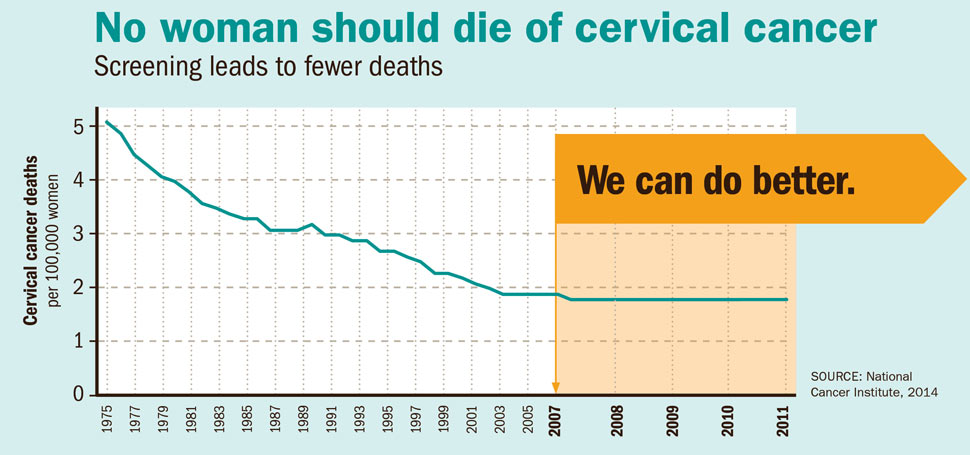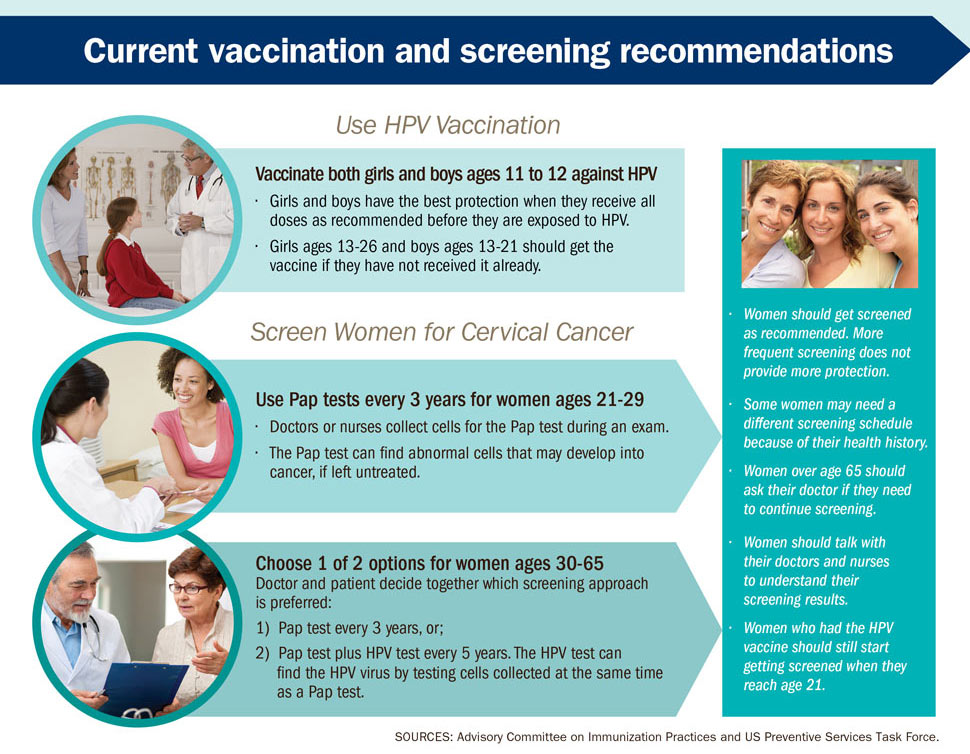Cervical Cancer is Preventable infographic
Cervical Cancer is Preventable infographic
Vital Signs

Missed opportunities for cervical cancer screening
This graphic shows the progression from normal cervical cells to human papillomavirus (HPV) infection to precancers to cervical cancer. Most HPV infections do not turn into precancers, and precancers may go back to normal cervical cells. Children who are 11 to 12 years old can be vaccinated against HPV, and women who are 21 to 65 years old can be screened for cervical cancer.

No woman should die of cervical cancer – Screening leads to fewer deaths
This line chart shows the changes in cervical cancer death rates from 1975 to 2011. Rates dropped most years between 1975 and 2007, but stayed the same between 2008 and 2011.

Current vaccination and screening recommendations
Use HPV Vaccination
Vaccinate both girls and boys ages 11 to 12 against HPV
- Girls and boys have the best protection when they receive all doses as recommended before they are exposed to HPV.
- Girls ages 13-26 and boys ages 13-21 should get the vaccine if they have not received it already.
Screen Women for Cervical Cancer
Use Pap tests every 3 years for women ages 21-29
- Doctors or nurses collect cells for the Pap test during an exam.
- The Pap test can find abnormal cells that may develop into cancer, if left untreated.
Choose 1 of 2 options for women ages 30-65
Doctor and patient decide together which screening approach is preferred:
- Pap test every 3 years, or;
- Pap test plus HPV test every 5 years. The HPV test can find the HPV virus by testing cells collected at the same time as a Pap test.
Women should get screened as recommended. More frequent screening does not provide more protection.
- Some women may need a different screening schedule because of their health history.
- Women over age 65 should ask their doctor if they need to continue screening.
- Women should talk with their doctors and nurses to understand their screening results.
- Women who had the HPV vaccine should still start getting screened when they reach age 21.
